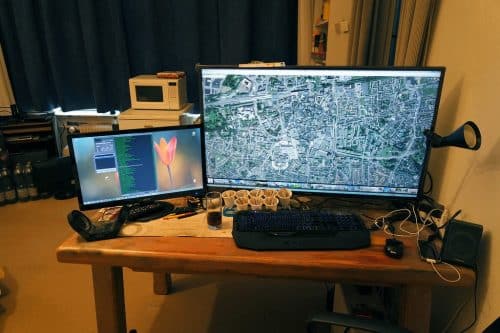A method that may lead to the development of new types of displays based on structural colours.
Researchers have developed a new and simple method to create structural colours using reflective colour displays. The new method promises to enable the manufacturing of thin and lightweight displays with high energy efficiency for a broad range of applications.
The perception of colour to the human eye are certain wavelengths of light that are scattered by the objects we see. The colour, basically created by pigments that absorb light, is the general way of understanding colours today. However, colours can be created in other ways, and one such way is due to the structure of the materials.
Structural colours arise when light is internally reflected inside the material and interference effects take place. A mind-boggling natural example is the peacock feather, which is fundamentally brown but acquires the blue-green colour from small structural features that lead to internal reflections of light on a nanometric scale.
Reflective Colour Displays
The technology used in displays for mobile phones and computers today consists of small light-emitting diodes (LED) of red, green and blue positioned close to each other such that they together create white light. The pigment (molecules) from which each of the LEDs is built determines its colour. However, this process is relatively expensive to manufacture and its use as displays is not energy efficient.
Reflective colour displays are extensively studied to enable a more efficient system for usage in e-readers, and electronic labels. These displays form images by controlling how incident light from the surroundings is reflected, which means that they do not need their own source of illumination.

Shangzhi Chen at the Laboratory of Organic Electronics at Linköping University and the principal author of an article that describes a new type of dynamic structural colour image, published in the scientific journal Advanced Materials.
“We have developed a simple method to produce structural colour images with electrically conducting plastics, or conducting polymers. The polymer is applied at nanoscale thicknesses onto a mirror by a technique known as vapour phase polymerisation after the substrate has been illuminated with UV light. The stronger the UV illumination, the thicker the polymer film, and this allows us to control the structural colours that appear at different locations on the substrate,” says Shangzhi Chen.
According to Chen and his colleagues, the method can produce all colours in the visible spectrum. Along with that, the colours can be subsequently adjusted using an electrochemical variation of the redox state of the polymer.
Magnus Jonsson, associate professor at the Laboratory of Organic Electronics at Linköping University, believes that the method has great potential in applications such as coloured electronics labels, or even more advanced displays for the future.
“We receive increasing amounts of information via digital displays, and if we can contribute to more people gaining access to information through cheap and energy-efficient displays, that would be a major benefit. But much research remains to be done, and new projects are already underway,” says Magnus Jonsson.






